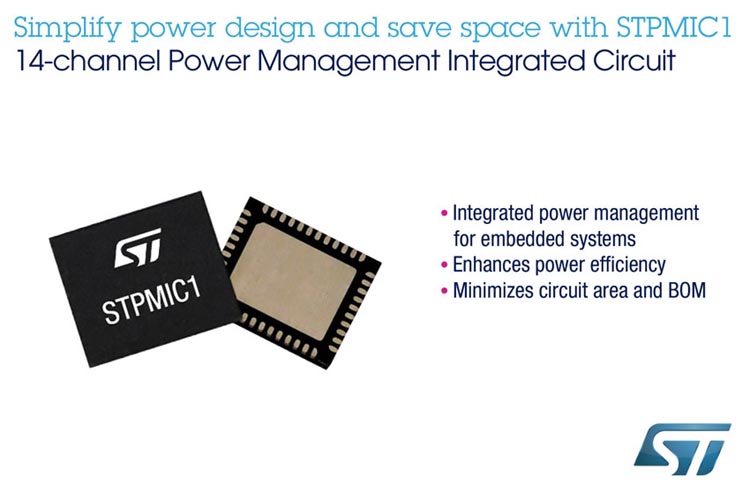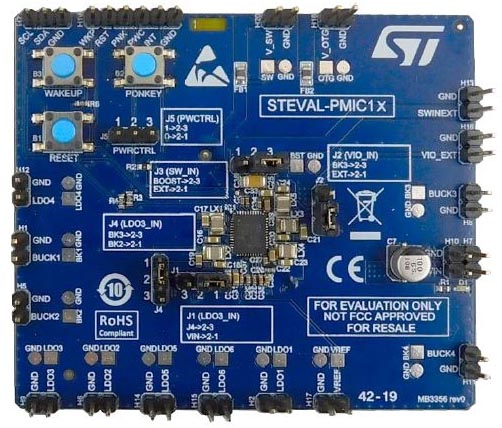Companion chip to STM32MP1 microprocessor and general-purpose system power management solution
With features including four DC/DC buck converters, a boost DC/DC converter, and six low-dropout regulators (LDOs), the STMicroelectronics STPMIC1 power-management IC (PMIC) satisfies the complex power demands of highly integrated application-processor based systems.

The chip is optimized as a companion PMIC for ST’s STM32MP1 heterogeneous multicore microprocessors, which target a broad range of applications by integrating single or dual Arm® Cortex®-A7 and Cortex-M4 cores, an optional 3D graphics processing unit, and rich digital and analog peripherals.
More than simply saving board space and BOM cost, compared to arranging the same number of power rails using discrete components, the STPMIC1 also provides power-rail monitoring and protection, handles power-up/down sequencing, and meets the ST32MP1 accuracy and settling-time specifications.
ST Authorized Partner Octavo Systems has utilized the STM32MP1 and STPMIC1 to create the OSD32MP1x family of microprocessor system-in-package (SiP) devices, which occupy a footprint up to 64% smaller than an equivalent system implemented with discrete components while also addressing engineering challenges such as power sequencing.
In addition to supplying power rails for the microprocessor unit (MPU) and external system components, the STPMIC1 also provides a DDR memory reference voltage, a 500 mA USB OTG power switch, and a general-purpose power switch. An I2C interface and additional pins allow the MPU to manage the PMIC.
The four buck converters in the PMIC are designed for fast transient response and precise output-voltage control to handle a wide range of operating conditions. A pulse-frequency modulation mode boosts energy efficiency at low loads. During normal operation, pulse-width modulation (PWM) synchronization minimizes electro-magnetic interference (EMI). The boost converter, with bypass-mode capability, can power up to two USB ports and ensures smooth regulation either when operating from a battery or low-cost 5 V AC/DC adapter.
Among the six LDO channels, one is featured for DDR3 termination and can operate in bypass mode for low-power DDR, while another provides automatic source detection to power a USB PHY. The remaining four LDOs are general-purpose outputs.
An evaluation board, STEVAL-PMIC1K1, is also available, which simplifies prototyping with the STPMIC1. The board is easy to use, with pushbuttons and digital I/Os for triggering the PMIC features, and header connectors for accessing the regulators and switches. A USB dongle is also included for configuring the device registers.
 |
| The STEVAL-PMIC1K1 Evaluation Board for STPMIC1x Power Management IC. |
The STPMIC1 is in production now and available in a 5 mm × 6 mm × 0.8 mm WFQFN 44-lead package, priced from $1.7 for orders of 1000 pieces.